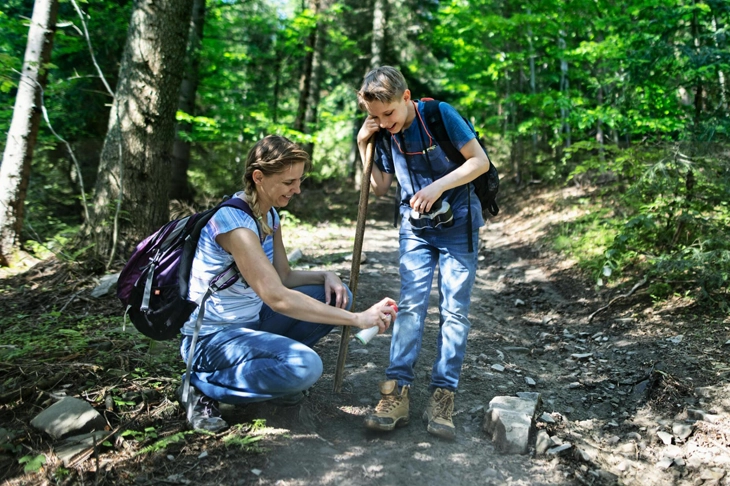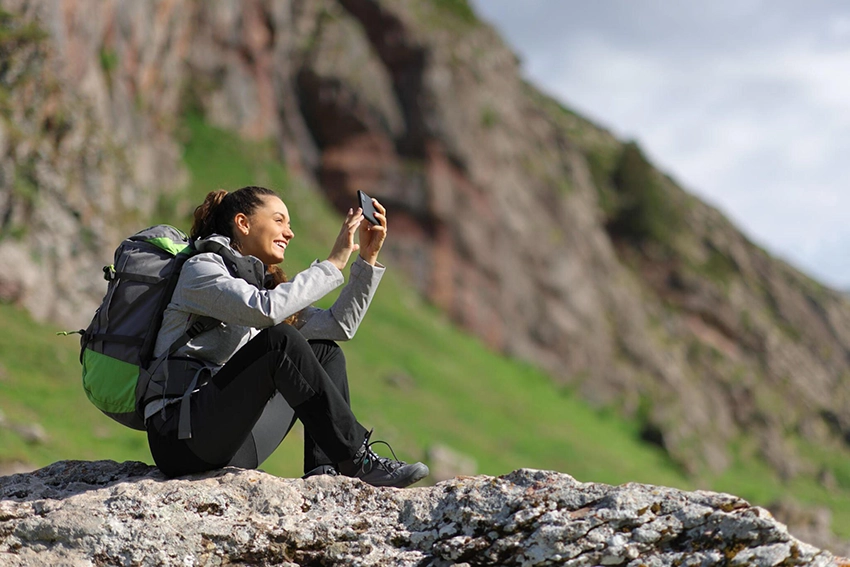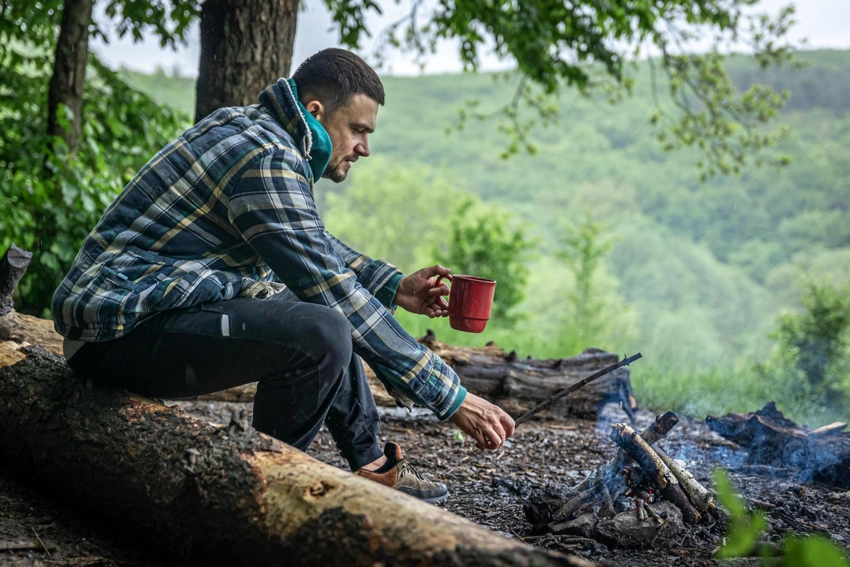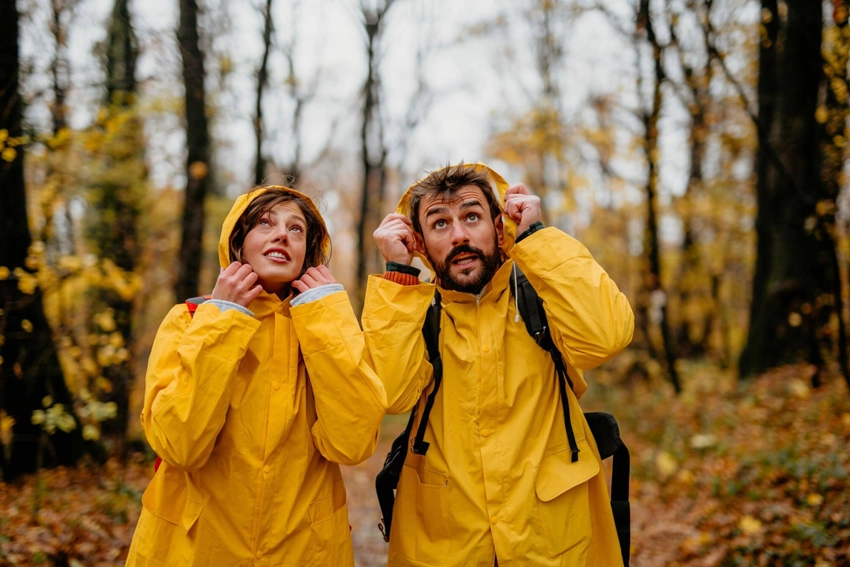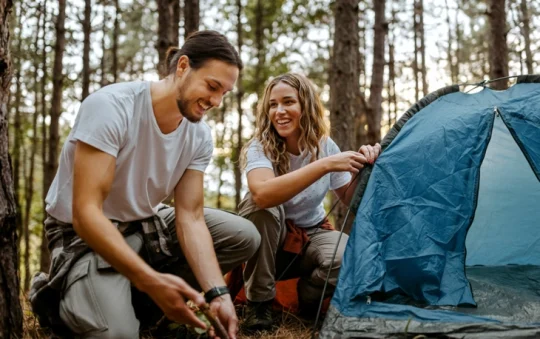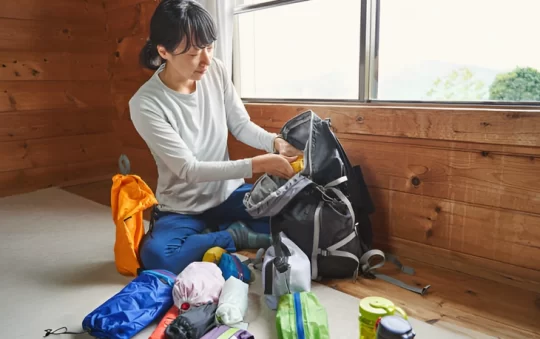Backpacking opens up a world of beautiful landscapes and exciting adventures. To fully enjoy it, learning a few key skills is essential for every backpacker.
This guide will introduce you to the basics that will help make your backpacking trips successful. These skills will help you navigate new trails, set up a safe and comfortable camp, and keep yourself well-fed and hydrated. Whether you’re an experienced hiker or just getting started, these fundamentals are important for your safety and enjoyment.
We’ll cover everything from how to navigate, set up camp, manage your gear, and stay ready for emergencies. By mastering these skills, you’ll be prepared to take on the trail and connect more deeply with nature.
Let’s start this exciting adventure together and experience the wonders of the outdoors.
Navigation Skills
Mastering navigation skills is essential for a successful and enjoyable backpacking adventure. It helps you explore different terrains confidently and reach your destinations safely. Whether you’re hiking on remote trails or discovering new wilderness, these skills are important for both safety and peace of mind.
Understanding Maps:
Learning how to read topographic maps is crucial for backpackers. These maps show important details like elevation changes, water sources, and landmarks. By understanding contour lines, symbols, and scales, you can plan your route and measure distances accurately.
Using a Compass:
Even with modern GPS technology, a good compass is still vital, especially in areas with weak satellite signals. Get familiar with basic compass techniques like taking bearings, orienting your map, and lining up the compass with map features.
Using GPS Technology:
GPS devices are helpful for navigating tough terrain. Learn how to set waypoints, track your route, and use breadcrumb trails to find your way back. But always carry a paper map and compass as backups in case your device fails or runs out of battery.
Orientation:
Before you start, take time to understand your surroundings. Identify major landmarks, rivers, and mountain ranges. Notice trail signs, junctions, and other natural clues to stay on course.
Preparation:
Good preparation is key to a smooth backpacking trip. Research your route carefully, considering trail conditions, possible hazards, and water sources. Have backup plans ready, and let someone know your itinerary before you leave.
By improving your navigation skills and practicing them regularly, you’ll gain the confidence to explore new trails and wilderness areas safely. Remember, navigation is not only about finding your way. It’s about fully enjoying the beauty of nature.
Setting Up Shelter and Campsites for Backpacking
Choosing the right campsite and setting up your shelter are important skills for a great backpacking experience. A good campsite offers comfort, protection from the weather, and helps you reduce your impact on nature. Here’s how to make the most of your campsite and shelter setup:
Selecting the Campsite:
Look for a flat, well-drained spot, away from dangers like dead trees or uneven ground. Consider how close you are to water sources, the direction of the wind, and how much sunlight the area gets. Try to use established campsites whenever possible to follow Leave No Trace principles and minimize your environmental impact.
Types of Shelters:
There are different shelter options, such as tents, hammocks, tarps, and bivy sacks. Each one has its own pros and cons depending on weight, weather, and your personal preference. Practice setting up your shelter before your trip so you can set it up easily when you’re out in the field.
Setting Up Your Shelter:
A proper setup is important for comfort and protection. For tents, follow the manufacturer’s instructions to set it up securely. Make sure all corners and guylines are staked down. For hammocks or tarps, check the angle and tree spacing to ensure they are stable and comfortable.
Organizing the Campsite:
Keep your campsite neat to make things easier and reduce your impact. Create separate areas for cooking, eating, resting, and storing gear. Use bear-proof containers for food and make sure to pack out all waste before you leave.
Leave No Trace Principles:
Follow Leave No Trace principles to protect the wilderness. Dispose of waste properly, minimize campfire impact, and respect wildlife. Aim to leave the campsite cleaner than you found it so others can enjoy it too.
By learning how to pick a great campsite and set up your shelter, you’ll have a safe and enjoyable backpacking trip. Always remember, taking care of the environment helps preserve the beauty of nature for everyone.
Food and Water Management
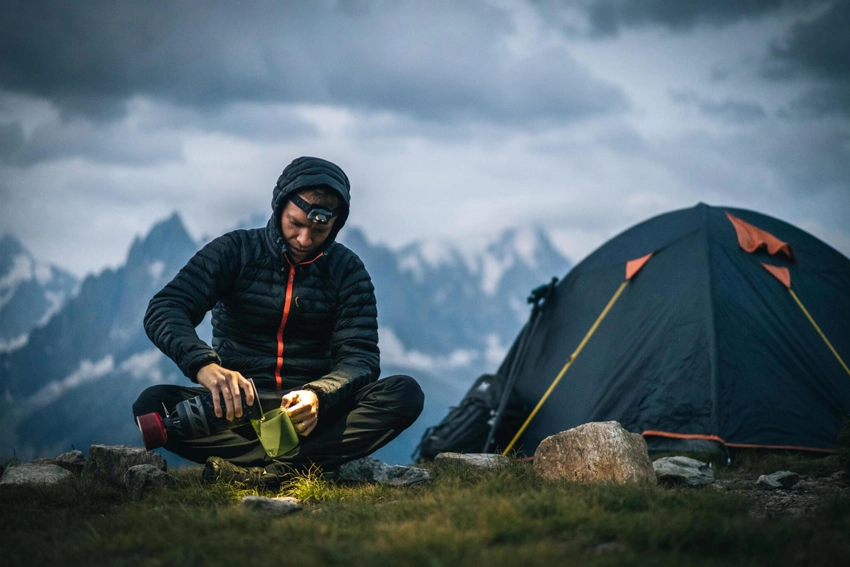
Managing your food and water is key to staying energized and hydrated during your backpacking trip. Properly handling these resources helps you enjoy your adventure while keeping your health in check. Here’s how to stay on top of hydration and meal prep:
Hydrating Properly:
Staying hydrated is essential, especially in hot or dry conditions. Make sure you carry enough water or know where to find reliable sources along your route. Plan your water intake based on how active you are, the weather, and the terrain to stay hydrated throughout your hike.
Purifying Water:
To avoid waterborne illnesses, always treat water from natural sources. Use portable filters, chemical purifiers, or UV devices to make sure the water is safe to drink. Follow the instructions for whichever method you use to make sure it’s done right.
Meal Planning:
Planning your meals carefully can make a big difference. Choose lightweight, non-perishable foods that provide good nutrition, like dehydrated meals, nuts, dried fruits, and energy bars. Consider the weight, size, and preparation time of your food to make sure it fits your needs and makes your trip more enjoyable.
Storing Food Safely:
Store your food properly to avoid attracting wildlife and to minimize your environmental impact. Use bear-resistant containers or hang your food out of reach in bear-prone areas. Keep food and trash away from your campsite to avoid bringing wildlife near.
Managing Waste:
Follow Leave No Trace principles by reducing food waste and disposing of scraps and packaging responsibly. Carry out everything you bring, including wrappers and food scraps. Avoid burying or burning waste as it can attract wildlife and harm the local environment.
By mastering food and water management, you’ll have the energy and hydration needed for a successful and enjoyable backpacking adventure.
Safety and Emergency Preparedness
Being prepared for emergencies and staying safe is essential for any backpacking trip. It’s all about being ready for anything, so you can face challenges with confidence. Here’s how to stay safe and be ready on the trail:
First Aid Kit:
Pack a well-stocked first aid kit for minor injuries. Your kit should include items like bandages, antiseptic wipes, adhesive tape, pain relievers, and blister treatments. These basics can help you manage small injuries on the trail.
Emergency Shelter:
Always carry a lightweight emergency shelter, such as a space blanket, bivy sack, or small tent. This can be a lifesaver if you get stuck in bad weather or need to stay overnight unexpectedly. Choose something easy to use, weather-resistant, and durable.
Communication Devices:
Take communication tools with you, like a cell phone, satellite phone, two-way radio, or personal locator beacon (PLB). Make sure they are fully charged and have good signal coverage for the areas you’ll be exploring. These devices are important if you need help.
Navigation Tools:
Bring reliable navigation tools like a map, compass, or GPS device. Learning how to read maps, use a compass, and operate a GPS will help you stay on track, no matter the terrain.
Emergency Protocol:
Create an emergency plan for different situations, such as injuries, getting lost, or bad weather. Before you leave, share your plan and itinerary with a friend or family member and set up regular check-ins. This way, someone will know where you are and can help if something goes wrong.
Leave No Trace:
Follow Leave No Trace principles to protect the environment. Keep your campsite clean, pack out all trash, and be respectful of wildlife and fragile areas.
By staying prepared and informed, you’ll be ready to handle whatever the wilderness throws at you and have a safe and enjoyable adventure.
In Conclusion
May your backpacking adventures be filled with amazing moments and unforgettable experiences as you learn the skills of outdoor exploration. With strong navigation skills, you’ll move confidently across different terrains, easily reaching your destinations. Setting up your shelter and campsite carefully will give you comfort and protection no matter the weather. By managing your food and water wisely, you’ll stay energized and ready for whatever comes next.
Always remember to follow Leave No Trace principles, pack out all waste and leave your campsite as clean as you found it to keep nature beautiful. Approach each journey with curiosity, respect, and care for the environment, whether it’s a short trip or a long adventure. Every step in nature is a chance for growth, exploration, and a deeper connection with the world around you.
As you venture into the outdoors, find peace in your steps, let the landscapes inspire you, and enjoy the satisfaction of overcoming challenges. Use practical cooking gear for easy meals on the trail and maintain a sense of awe for the beauty that surrounds you. Safe travels, and may your adventures be full of lasting memories and a deep love for nature’s wonders.
